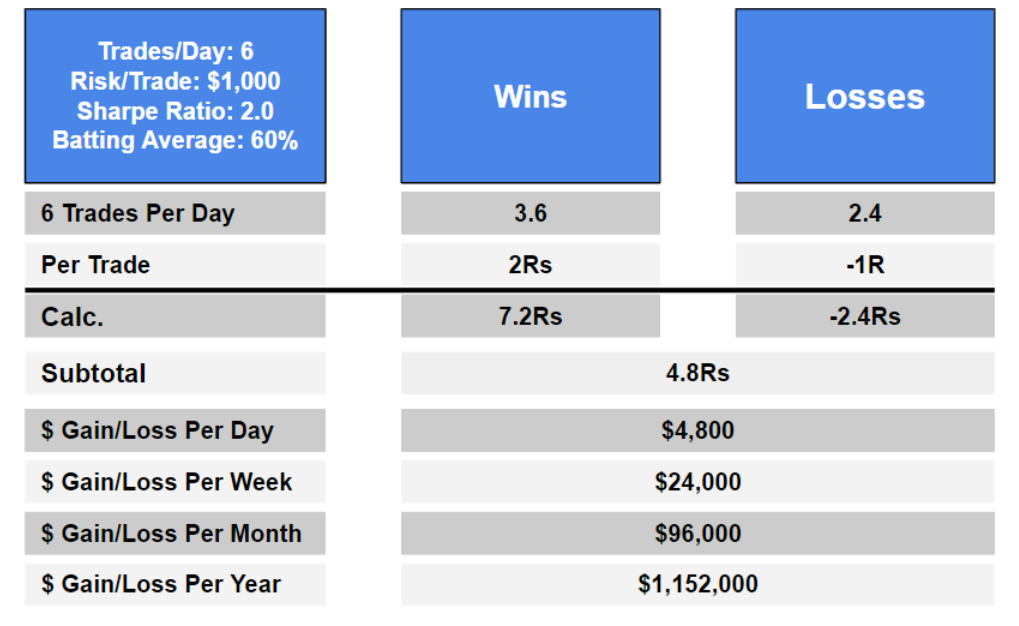
When you're looking to start Forex scalping, it's important to choose currency pairs with higher volatility, as these will give you more trading opportunities. If a broker doesn't have an open trading desk, it is important to avoid them. This can lead you to losing your trading account. Moving averages, Bollinger Bands, support and resistance are some of the most common Forex scalping strategies. These can be used to identify trading opportunities. A professional trader may prefer to manually execute the trade.
Trading at the dawn of the day
Forex trading is best done in the early morning and late afternoon. These hours are when the market tends to be at its most volatile so scalpers like this time. This is also a great time to trade option expiries or news releases. It's highly liquid. This time allows for both manual and automated scalping strategies. These hours are a great time to trade.

Focusing on a single currency pair or position at one time
When scalping, you should focus on one currency pair or position at a given time. It is difficult to see your charts when there are multiple open positions. This can lead to confusion and a loss of focus. The fastest movements will occur on major currency pairs with the most liquidity. Avoid scalping large currency pairs. Instead, focus on smaller currency pairs or positions with more liquidity. You will be able to earn more profits by not compromising your trading strategy.
RSI allows you to forecast the market's future direction
The RSI indicator is an indicator that is used to determine whether a stock is oversold or overbought. The indicator's center line is equal 50. If the indicator is too high, it means that you should either buy or sell. The RSI is more accurate in predicting the mean price of an item than the range. However, RSI can't be used to forecast the direction of the market alone. Before trading, you should consider the trend in the underlying asset.
Common scalping mistakes
It is common to make scalping errors by not being able reduce your losses in a market. A single huge loss can wipe out multiple trades worth of profits. Scalping requires intense concentration, so traders must not lose sight of the market while making even the smallest moves. The following are common scalping mistakes. Keep reading to find out how to avoid them. Listed below are three common scalping mistakes you should avoid. These are some of the most common mistakes made when starting a scalping business.

Choosing a broker that accommodates scalping
Scalping refers to trading that involves placing many trades quickly and profitably. Scalper can place hundreds of trades a day and each trade could result in a small amount of profit. Some brokers allow scalping while others ban it. Before you start scalping, it is important to understand all rules and regulations. Here are some considerations that you should make when selecting a forex brokerage for scalping.
FAQ
What is security at the stock market and what does it mean?
Security can be described as an asset that generates income. Most common security type is shares in companies.
A company could issue bonds, preferred stocks or common stocks.
The earnings per share (EPS), as well as the dividends that the company pays, determine the share's value.
Shares are a way to own a portion of the business and claim future profits. If the company pays you a dividend, it will pay you money.
You can sell shares at any moment.
What is a bond and how do you define it?
A bond agreement is a contract between two parties that allows money to be transferred for goods or services. It is also known by the term contract.
A bond is normally written on paper and signed by both the parties. The bond document will include details such as the date, amount due and interest rate.
A bond is used to cover risks, such as when a business goes bust or someone makes a mistake.
Many bonds are used in conjunction with mortgages and other types of loans. This means that the borrower will need to repay the loan along with any interest.
Bonds are also used to raise money for big projects like building roads, bridges, and hospitals.
When a bond matures, it becomes due. This means that the bond's owner will be paid the principal and any interest.
Lenders are responsible for paying back any unpaid bonds.
What is the difference in the stock and securities markets?
The securities market is the whole group of companies that are listed on any exchange for trading shares. This includes stocks and bonds, options and futures contracts as well as other financial instruments. Stock markets can be divided into two groups: primary or secondary. Stock markets are divided into two categories: primary and secondary. Secondary stock exchanges are smaller ones where investors can trade privately. These include OTC Bulletin Board Over-the-Counter (Pink Sheets) and Nasdaq ShortCap Market.
Stock markets are important because it allows people to buy and sell shares in businesses. The value of shares depends on their price. The company will issue new shares to the general population when it goes public. These newly issued shares give investors dividends. Dividends are payments made to shareholders by a corporation.
In addition to providing a place for buyers and sellers, stock markets also serve as a tool for corporate governance. Shareholders elect boards of directors that oversee management. Boards ensure that managers use ethical business practices. The government can replace a board that fails to fulfill this role if it is not performing.
Statistics
- US resident who opens a new IBKR Pro individual or joint account receives a 0.25% rate reduction on margin loans. (nerdwallet.com)
- Even if you find talent for trading stocks, allocating more than 10% of your portfolio to an individual stock can expose your savings to too much volatility. (nerdwallet.com)
- Our focus on Main Street investors reflects the fact that American households own $38 trillion worth of equities, more than 59 percent of the U.S. equity market either directly or indirectly through mutual funds, retirement accounts, and other investments. (sec.gov)
- Ratchet down that 10% if you don't yet have a healthy emergency fund and 10% to 15% of your income funneled into a retirement savings account. (nerdwallet.com)
External Links
How To
How to make your trading plan
A trading plan helps you manage your money effectively. It helps you understand your financial situation and goals.
Before you begin a trading account, you need to think about your goals. You might want to save money, earn income, or spend less. You might consider investing in bonds or shares if you are saving money. If you are earning interest, you might put some in a savings or buy a property. And if you want to spend less, perhaps you'd like to go on holiday or buy yourself something nice.
Once you have a clear idea of what you want with your money, it's time to determine how much you need to start. This depends on where you live and whether you have any debts or loans. It is also important to calculate how much you earn each week (or month). Income is the sum of all your earnings after taxes.
Next, you need to make sure that you have enough money to cover your expenses. These include bills, rent, food, travel costs, and anything else you need to pay. Your monthly spending includes all these items.
Finally, you'll need to figure out how much you have left over at the end of the month. This is your net discretionary income.
You now have all the information you need to make the most of your money.
You can download one from the internet to get started with a basic trading plan. Or ask someone who knows about investing to show you how to build one.
Here's an example of a simple Excel spreadsheet that you can open in Microsoft Excel.
This displays all your income and expenditures up to now. Notice that it includes your current bank balance and investment portfolio.
Here's another example. This was designed by a financial professional.
It will help you calculate how much risk you can afford.
Don't try and predict the future. Instead, be focused on today's money management.